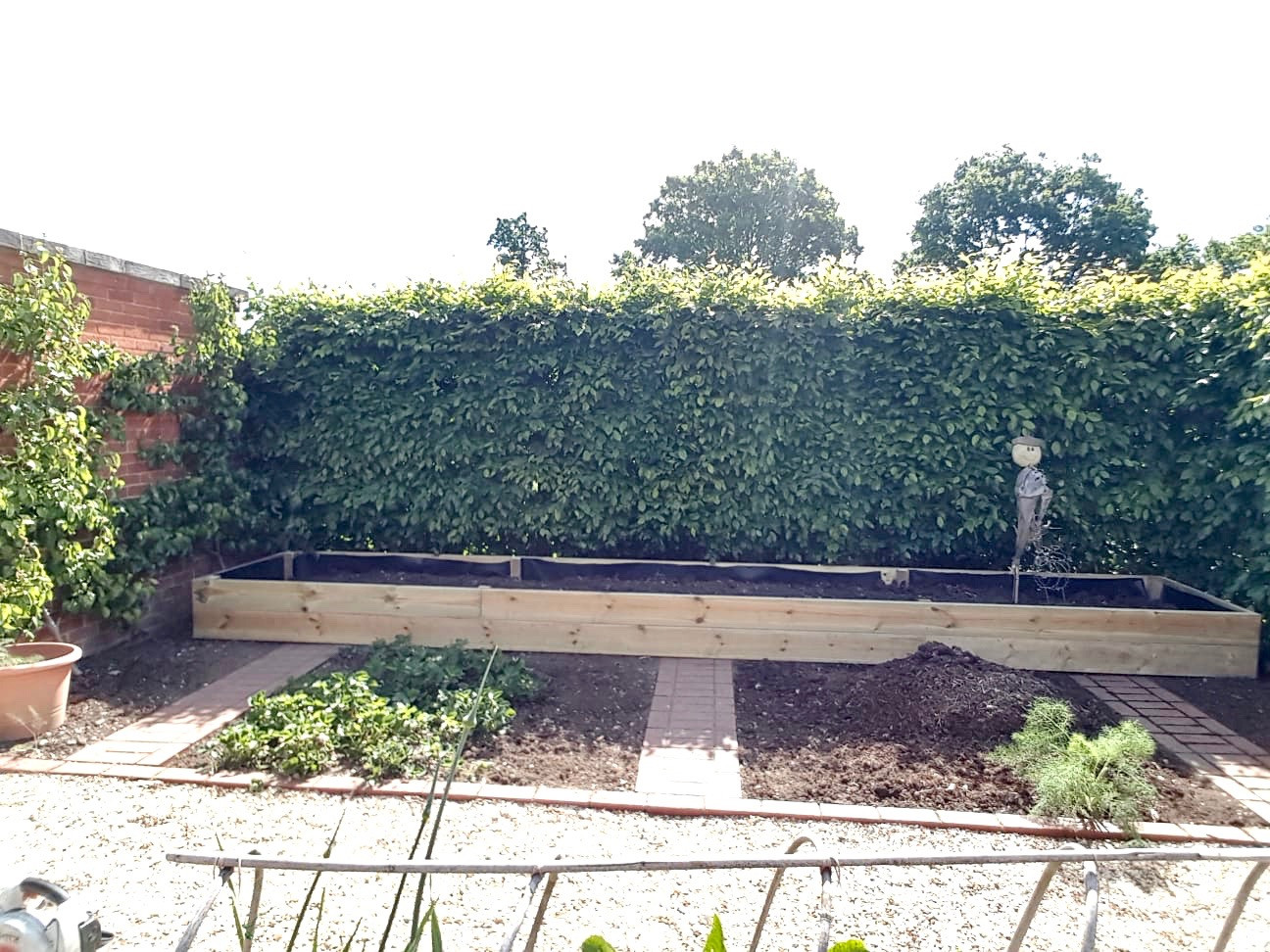Hampshire Garden Design & Maintenance Consultancy Est. 2000
CallVegetable Patches & Raised Beds
Advantages to raised beds:
Less weeds
Better water retention in areas that have super-sandy soil
Better drainage in areas with clay soils
More growing space and easier access
No soil compaction from human feet
Warmer soil earlier in the season and for a longer season
Soil that has basically a neutral pH unless you add something to change it (because you’re filling it)
Less soil erosion (especially, if the bed is framed)
The first example shows three large raised borders, and is a small part of a much larger garden. Having 3 beds allows us to rotate the crops to the benefit of the soil. We installed the beds originally about 17 years ago and have maintained them ever since. The original dark sleepers were treated, softwood sleepers which lasted well but needed replacing in 2019. The new beds were constructed from hardwood beech sleepers which should last even longer. We also treated them on the inside with Black Jack DPM waterproofing paint to further prolong the life. With large sleeper beds it’s easy to sit on the edge of the bed when planting and weeding and it also provides an attractive rustic aesthetic.
As part of a larger whole garden overhaul we built a flat, ground level veg patch with a picket fence to keep the dog out! You can see before, during and after photos for this one. In combination with the existing greenhouse this veg patch allows easy transplantation of seedlings and an extensive growing season in spite of being mostly north facing. The trellis screen also provides modern feel and a completely separate area from the driveway without blocking the light.
The low level raised beds in front of the brick wall were originally used for vegetables but more recently have been planted with roses - showing the flexibility and increased access you get with raised beds. Building directly on to solid chalk soil, raised beds were a great option here to make it easy to introduce more organic matter to allow plant growth which would otherwise have been tricky. Wood-chip paths provide access. The beds are made from 2x9 timber, chunky for durability but by not using sleepers we increased the potential planting area.
The final example shows another simple 2x9 plank bed which replaced a much smaller lighter construction. Lined with polyethylene to both protect the boars and retain moisture these beds should last well. Part of a much larger vegetable garden and with ground level beds in front they allow light, visibility and access at the back of a larger planting area.



































